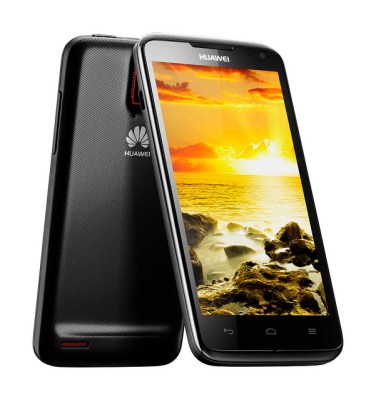We haven’t heard much from Huawei lately. Aside from a few smartphones here and there, the company hasn’t really made a huge push or impression as of late. But according to this release we’re seeing here at Mobile World Congress in Barcelona, Huawei has quite a bit in store for us, including the freshly announced Ascend D quad smartphone.
Huawei wants to market this as the “world’s fastest smartphone,” which is a tough thing to calculate but probably has something to do with its Huawei K3V2 quad-core 1.2GHz processor and the fact that Android 4.0 Ice Cream Sandwich is along for the ride. Past that, you’ll also find a 4.5-inch 720p display with a 32-bit true color graphic processor and 330ppi.
On the back you’ll find an 8-megapixel rear facing camera capable of video capture in 1080p, along with a 1.3 megapixel front-facing camera. Manufacturers are finally starting to realize that our smartphones look really dumb when they die halfway through the day, which is likely why Huawei has tossed in an 1800mAh battery. That in itself isn’t all that exciting — the Razr Maxx has a 3300mAh battery — but Huawei is using special power management tech which gives 30 percent more juice by adjusting power consumption based on needs. The system also makes sure the processing chip temperature stays low.
The Ascend D is sure to be snappy with that quad-core chip, but the phone is actually surprisingly thin as well. It sports an 8.9mm waistline, the same as the Samsung Galaxy S II, but can’t quite be called “the world’s thinnest” thanks to the 7.1mm Droid Razr.
Huawei also has a few other iterations fitting into the D series, including the Ascend D quad XL and the Ascend D1 smartphones. The XL has all the same specifications except that it uses a much larger battery (2500mAh) and thus sports a tad thicker waistline at 10.9mm. Meanwhile, the D1 runs a 1.5Ghz dual-core processor and packs a smaller 1670mAh battery.
You’ll find any three of these phones in April of this year, though we’re still waiting to hear on pricing.



